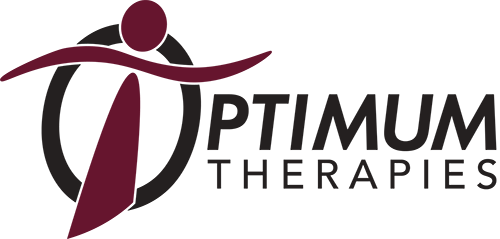Hip Pain Therapy in Wisconsin and North Dakota
What are Hip Disorders?
Hip disorders are conditions that affect the hip joint. The hip joint is very important as it supports the weight of the body and allows the leg to move in many different directions. If you’re struggling with hip pain in Wisconsin or North Dakota, contact Optimum Therapies today to meet with a board-certified physical therapist and get started on the road to recovery. Give your preferred location a call directly, or schedule a secure virtual consultation.
A Closer Look at Your Hip
Your hip is the joint where your femur (thigh bone) meets your pelvis (hip bone). This is called a ball-and-socket joint, because the ball at the end of your thigh bone fits into your socket in your hip bone. This gives you a wide range of motion and stability, but there can be issues that arise.
Some hip disorders are present at birth, while others develop as you age. They can develop due to injuries in sports, overuse, or a sudden fall. Issues can also develop as we age if we are not intentional with diet and exercise.
What are Common Hip Conditions?
Some common disorders of the hip include:
Arthritis – Arthritis is a very common cause of hip pain, and their are three kinds of arthritis that commonly affect the hip:
- Osteoarthritis – The wear and tear of the cartilage and bone of the hip that causes hip pain and stiffness. This is common as we age.
- Rheumatoid arthritis – An inflammatory and autoimmune disease that causes the immune system to attack the thin membrane that lines the joints.
- Traumatic arthritis – Often the result of an injury or fracture.
Osteoporosis – Causes weak bones that break easily. May lead to hip fractures.
Strains – A hip strain occurs when one of the muscles supporting the hip joint is stretched beyond its limit or torn. Strains may be mild, moderate, or severe.
Bursitis – This occurs when the fluid-filled sac (bursa) in the joint becomes inflamed and you may feel pain or stiffness. Each bursa functions as a gliding surface to reduce friction between tissues.
- Trochanteric Bursitis -The most commonly injured bursa, located at the outward curve of the femur (thighbone) where it meets the hip bone.
- Iliopsoas Bursitis – A bursa located in the front part of the hip joint.
Dislocations – Dislocations are joint injuries that force the ends of your bones out of position. Hip dislocation is a painful event in which the ball joint of your hip comes out of its socket.
Hip Pointer – A bruise or tear in the muscle that connects to the top of the ileum (the crest of the pelvis, just below the waist). Causes of a hip pointer may include a blow or a fall.
Hip Flexor Issues – Hip flexors are the group of muscles that help you lift your knee to your body. When the hip flexor muscles are overused they can cause pain.
Femoroacetabular impingement, or FAI – A condition where the bones of the hip are abnormally shaped. Because they do not fit together perfectly, they against each other and cause damage to the joint.
Hip Dysplasia – the ball at the end of the femur is loose in the hip socket and can cause hip dislocation. People who have hip dysplasia are usually born with it, but sometimes they develop it later.
What You May Be Experiencing
If you have a hip disorder, you may suffer from:
- Pain in the hip
- Limping
- Reduced movement in the hip joint
- Referred pain (may be felt in the leg)
- Muscle stiffness
- Pain in the leg when you apply weight on that leg
- Increased issues after sitting for long periods
If you have suffered from a traumatic fall or accident, you may need immediate medical attention. Many hip disorders can worsen over time, so it is wise to seek care as soon as possible.
Seeking Expert Care
Treatment varies widely, depending on the problem. The best way to determine which treatment option is right for you is to meet with a specialist. We will work with you to see how we can help treat your hip condition. Call Optimum Therapies if you’re struggling with hip pain to meet with a board-certified physical therapist, or schedule a secure virtual consultation.
